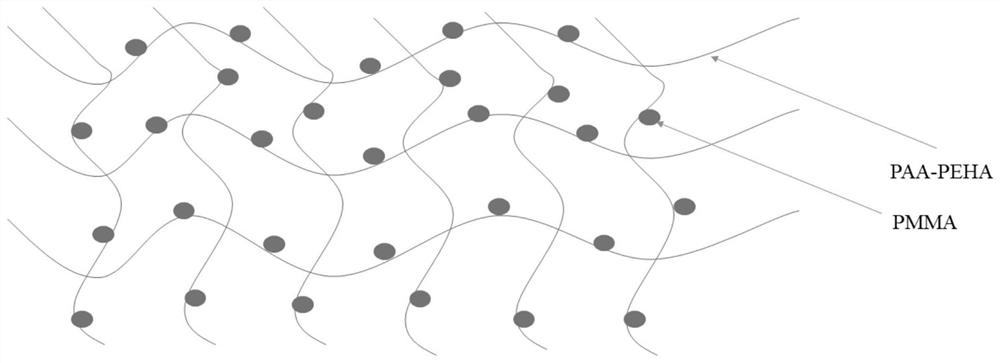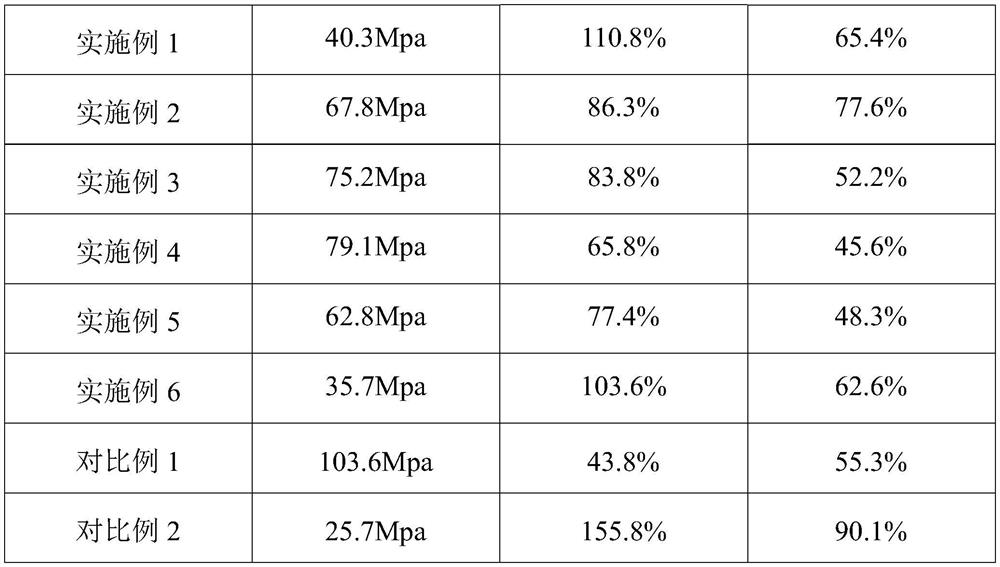Modified water-based binder as well as preparation method and application thereof
A water-based binder and modification technology, applied in the field of modified water-based binder and its preparation, can solve the problems of poor stability, low bonding strength and high liquid absorption rate of the water-based binder, and achieve strong alkali resistance. , good dispersion, low liquid absorption effect
- Summary
- Abstract
- Description
- Claims
- Application Information
AI Technical Summary
Problems solved by technology
Method used
Image
Examples
Embodiment 1
[0041] This embodiment provides a modified water-based binder, which is prepared by the following method:
[0042] (1) Mix 0.8 parts of RAFT reagent, 0.3 parts of initiator, and 50 parts of acrylic monomer and react at 65°C for 12 hours to obtain 50 parts of polyacrylate;
[0043](2) Add 25 parts of p-isooctyl acrylate monomer to the polyacrylate obtained in step (1), and react at 70° C. for 8 hours to obtain acrylic acid and acrylate binary copolymer;
[0044] (3) Add 25 parts of methyl methacrylate monomer and 431 parts of deionized water after dissolving the obtained acrylic acid and acrylate binary copolymer obtained in step (2), and mix for 4 hours at 4500r / min to obtain the modified water-based binder.
[0045] The schematic diagram of the modified water-based binder is as figure 1 shown.
Embodiment 2
[0047] This embodiment provides a modified water-based binder, which is prepared by the following method:
[0048] (1) Mix 0.6 parts of RAFT reagent, 0.5 parts of initiator, and 50 parts of acrylic monomer and react at 70°C for 15 hours to obtain 50 parts of polyacrylate;
[0049] (2) Add 20 parts of p-isooctyl acrylate monomer to the polyacrylate obtained in step (1), and react at 75°C for 9 hours to obtain acrylic acid and acrylate binary copolymer;
[0050] (3) Add 30 parts of methyl methacrylate monomer and 573 parts of deionized water after dissolving the obtained acrylic acid and acrylate binary copolymer obtained in step (2), and mix for 5 hours at 4000r / min to obtain the modified water-based binder.
Embodiment 3
[0052] The only difference between this embodiment and Example 1 is that the acrylic acid monomer described in step (1) is 55 parts, and the p-isooctyl acrylate monomer described in step (2) is 20 parts, and other conditions and parameters are completely the same as those in Example 1. same.
PUM
| Property | Measurement | Unit |
|---|---|---|
| elastic modulus | aaaaa | aaaaa |
Abstract
Description
Claims
Application Information
 Login to View More
Login to View More - R&D
- Intellectual Property
- Life Sciences
- Materials
- Tech Scout
- Unparalleled Data Quality
- Higher Quality Content
- 60% Fewer Hallucinations
Browse by: Latest US Patents, China's latest patents, Technical Efficacy Thesaurus, Application Domain, Technology Topic, Popular Technical Reports.
© 2025 PatSnap. All rights reserved.Legal|Privacy policy|Modern Slavery Act Transparency Statement|Sitemap|About US| Contact US: help@patsnap.com



